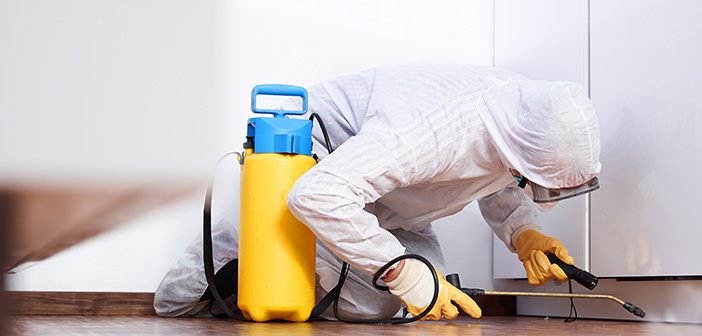Natalie Bungay, technical and compliance officer at the British Pest Control Association said that it’s good for pest control businesses to be prepared and to take a look at what you need to consider when you eventually reopen your pest control business.
Risk assessments
Ms Bungay said: “We love a good risk assessment at BPCA because you can never be too safe! It’s been advised that a COVID-19 risk assessment must be done for all businesses with five or more employees.
“However, BPCA highly recommends all companies, regardless of size, carries out a risk assessment relating to the risk of contracting or spreading Covid-19. Risk assessments are a vital tool to justify your decisions and actions as a business, should the need arise.”
Some key points to consider are:
- Ways the virus could be transmitted/spread;
- Identify activities and locations where transmission is more likely;
- Apply the hierarchy of control to develop a control strategy.
Once you’ve filled in your risk assessment, it should be made available for all employees to read and sign to acknowledge their understanding.
Ms Bungay said: “Risk assessment templates are available to BPCA members in the member area (login required). You can also demonstrate good practice by using a toolbox talk template, also in the BPCA member area, to discuss the risk assessment and how technicians can practically implement the control measures.”
Communication and procedures
Signs should be visible in all areas of the workplace, highlighting social distancing rules and hygiene practices.
Ms Bungay said: “If you have an equipment/pesticide store that technicians need to visit to re-stock, make sure they understand that they must be two metres apart at all times. Maybe devise a rota for store visits.
“It is important that you share with employees any changes that are happening and mitigation measures in place. This is a legal responsibility as well as a moral one. To do this you need to make sure that you have effective communication channels in place, including emergency contact details.”
Access, cleaning and limiting numbers
Ms Bungay said that it’s imperative that businesses record any visits to shared workspaces or offices on a log sheet.
“Where possible, restrict or stop all visits to the workplace that are unnecessary,” she said. “Install barriers or floor markings to ensure social distancing while waiting to enter/exit the workplace or store”
Ms Bungay added: “Plastic screens should be used to avoid face to face contact – if technicians need to share a vehicle, drop-down screens can be fitted to protect the occupants.”
PPE
Ms Bungay said that businesses should extend their use of PPE wherever reasonably possible.
“There are certain items such as safety glasses, gloves and face masks, which are frequently a part of a pest controllers toolkit,” she said.
“Let your customers know that you will be extending your use of these to include your arrival on-site. If at all possible, use disposable items so you can wear a new set on the next job.
“Let your clients know of any additional costs because of precautionary measures taken at this time, making it clear that you are taking these steps for your own safety and that of your clients.”


